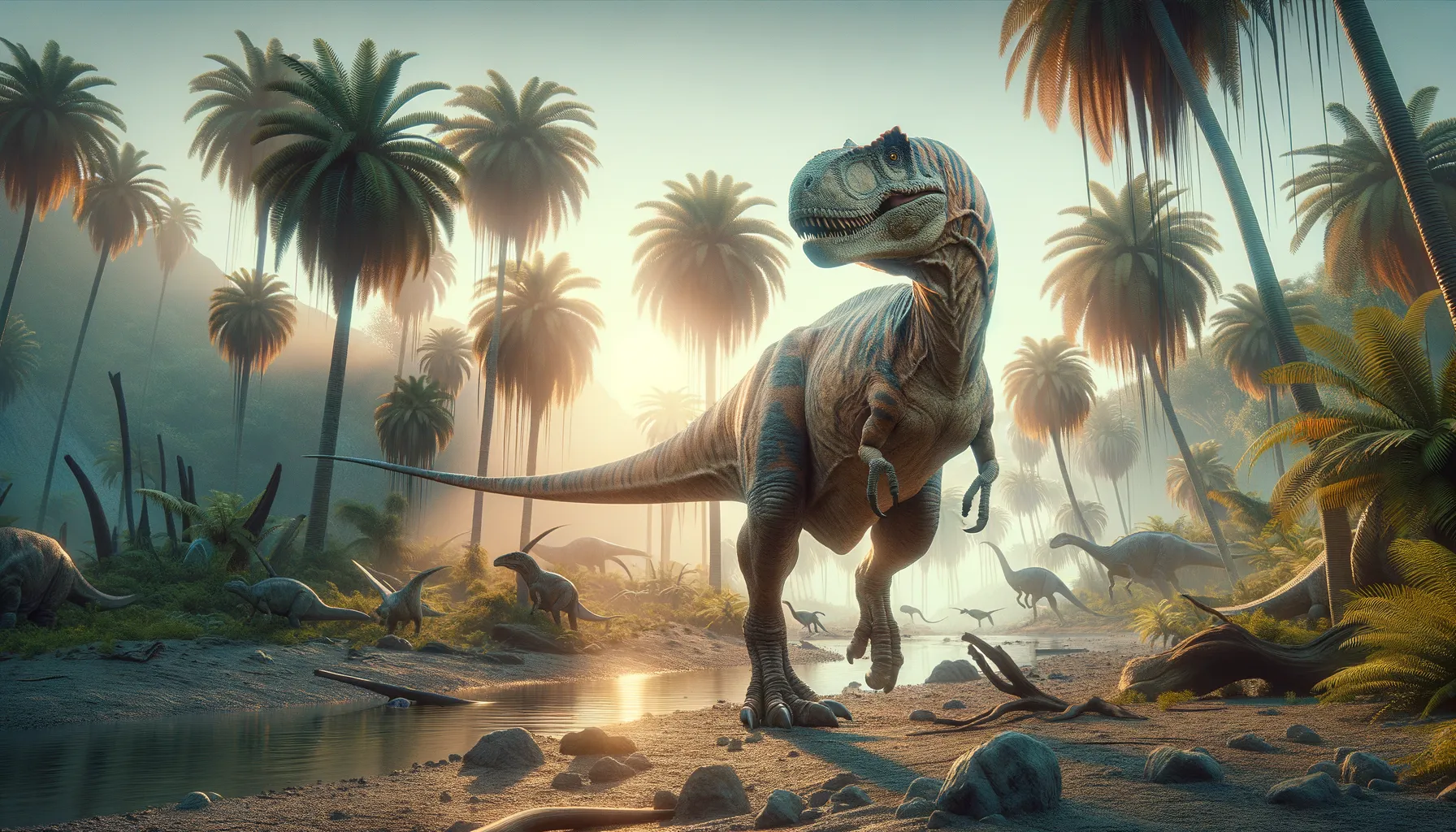
Marshosaurus
A Jurassic predator with a mysterious past.
Period
Jurassic
Length
Measured approximately 5 meters long.
Height
Stood about 2 meters tall.
Weight
Weighed around 500 kilograms.
Marshosaurus was a carnivorous dinosaur that roamed North America during the Late Jurassic period. Known for its moderate size, it had features typical of theropods, such as a bipedal stance and powerful hind legs, which aided in its predatory lifestyle. Its discovery provided valuable insights into the diverse theropod fauna of its time, enriching the broader understanding of dinosaur ecosystems.
Diet
Marshosaurus was a carnivore that likely preyed on smaller dinosaurs and other animals. Its sharp teeth and agile body made it an effective hunter in its environment.
Hunting
With keen senses and sharp claws, Marshosaurus could ambush prey with efficiency. It likely used stealth and surprise in dense vegetation to catch its targets.
Environmental challenges
During the Jurassic, Marshosaurus faced competition from other large predators, which meant they had to share resources or find niche advantages. Natural obstacles such as volcanic activity and fluctuating climates also posed periodic threats to their survival. Changing vegetation patterns could alter the availability of prey, challenging their adaptability.
Speed
Moderate, capable of quick bursts.
Lifespan
Estimated to be around 20 to 30 years.
First discovery
Unearthed in Utah in the late 1960s.
Fun Facts
- Marshosaurus was a medium-sized theropod dinosaur that lived about 155 to 150 million years ago during the Late Jurassic period.
- Its name honors the American paleontologist Othniel Charles Marsh, who was a prominent figure in the Bone Wars.
- The fossils of Marshosaurus were discovered in the famous Cleveland-Lloyd Dinosaur Quarry in Utah, USA.
- This dinosaur is estimated to have been around 20 feet long, making it roughly the size of a small bus.
- Despite its size, Marshosaurus is thought to have been a swift and agile predator.
- Marshosaurus had powerful jaws and sharp teeth, perfect for its carnivorous diet.
- While the exact features of its skin are unknown, it likely had some form of primitive feathers or scales.
Growth and Development
Juvenile Marshosaurs had to grow quickly to evade predators, developing strong limbs and teeth. As they matured, changes in diet and behavior occurred, requiring them to adapt their hunting strategies. Fossil evidence suggests varied growth rates, influenced by environmental conditions and available resources.
Habitat
Marshosaurus inhabited forested areas that provided cover and a rich source of prey. It lived during a time of considerable geological activity, near river systems that regularly reshaped its territory. The mixed environments included semi-arid regions, demanding adaptability for survival.
Interaction with other species
Marshosaurus coexisted with both herbivorous and carnivorous dinosaurs, leading to dynamic predator-prey relationships. Evidence of tooth marks on other fossils suggests interactions could get violent. Symbiotic relationships with scavengers were possible, as they might feed on leftovers.
Natural lifespan
Marshosaurus likely lived for 20 to 30 years in the wild, assuming it avoided predation.
Reproduction
Marshosaurus likely laid eggs in carefully chosen sites to maximize protection from predators. Nesting patterns suggest communal nesting might have occurred, as observed in similar theropod species. Parental care is still debated but cannot be ruled out.
Social behaviour
Marshosaurus is believed to have been a solitary hunter, though it may have tolerated others during breeding season or in rich hunting grounds. Displays of aggression would be common to establish dominance and territory. Occasional evidence points to potential cooperative hunting.
Fossil locations
Fossil remains of Marshosaurus have been primarily found in the Morrison Formation in Utah. This site is known for its rich deposit of Late Jurassic dinosaur fossils. The region has been instrumental in reconstructing the Jurassic ecosystems of North America.
